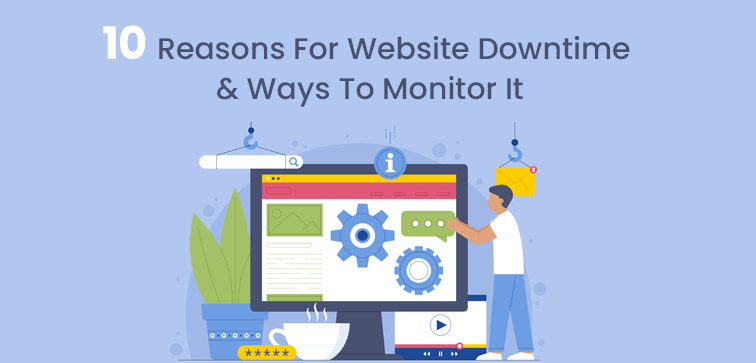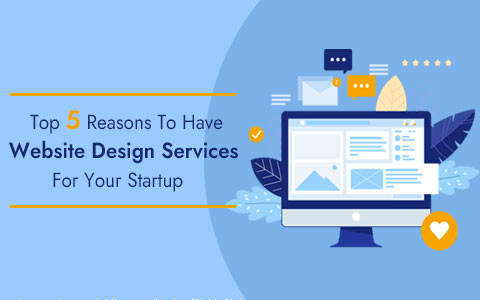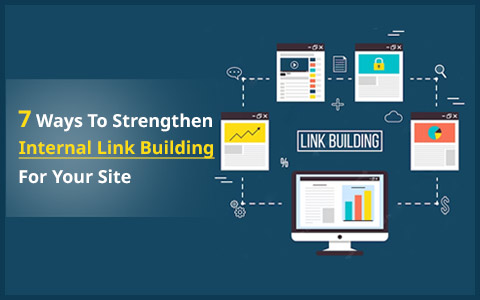10 Reasons For Website Downtime & Ways To Monitor It
“A website is a powerful tool that can be used to build relationships, grow businesses, and make a difference in the world.” – Gary Vaynerchuk

Unexpected and unpredictable situations are seldom fun, especially when you are running a business website and it shuts down for no known reason! Such a situation can be frustrating and stressful but more than that, it can actually impact your business, as it can mean losing sales and even damaging your business reputation.
To prevent this, it is necessary that your site maintenance is done regularly and the website is monitored for any unexpected downtime which will be resolved quickly if a situation arises. In this blog, we are going to learn about ten common reasons a site can run into a downtime situation and how to monitor your site to be well-prepared for such scenarios.
Midas is an ISO German certified web development and web solutions company with over fifteen years of industry recognition in designing and developing coveted websites for various niche markets. You can reach out to us for the latest Web Development Services and bespoke designing solutions!
Define Website Downtime:
Your site can be considered the face of your business online and through this platform you are able to interact and engage with your prospects, clients, and long-term customers.
An online user will have to visit your site to get to know your business and your services. However, if due to some technical problem, the site is not reachable or available, then it is called website downtime.
There could be various reasons why a site is not available and that include reasons like software failure, power outage, and server maintenance, etc.
Types of Website Downtime:
There are two types of website downtime situations, planned and unplanned.
1. Planned Downtime: A site downtime will be called planned one when you are taking the site offline for a specified duration and the reason behind it could be site maintenance or website update. As these types of downtimes are scheduled and pre-planned, the risk of losing or affecting sales is minimal.
2. Unplanned Downtime: In this situation, your website will go offline for technical issues that are unforeseen or unexpected. Server issues, power outages, and software failure come under unplanned downtime situations. Such site downtimes can impact your sales and your business can suffer in terms of losing customers’ trust and it can affect your brand reputation.
Before moving on to website monitoring tips, it is important to have a reliable and professional website maintenance partner for your site maintenance. They will ensure that your site stays operational and online at all times. Also, it is essential that you keep a backup plan in place, such as a backup server or site, in case you face downtime problems in the future.
Here Are 10 Reasons Why Your Site Is Facing Unexpected Downtime:
1. Badly Written Code & Site Downtime:
Poorly written code during site development can cause the system to crash or malfunction due to undetected glitches and bugs. Such a situation can cause site downtime.
2. Human Error & Site Downtime:
Situations, when you mistype a command which leads to side downtime, will be considered an unintentional human error that caused site downtime.
However, there can also be intentional & deliberate human interference that can lead to the site to crashing, such as hacking.
3. Poor Or Inadequate Security & Site Downtime:
Without a strong security system in place for your website your site is vulnerable to malware and system attacks that can cause your site to face downtime.
4. Obsolete & Outdated Software And Hardware:
An obsolete and outdated system, software, and hardware are prone to experience system failures, errors, and downtime.
It is essential that your software is up-to-date and you have the latest hardware to complement the used software.
5. Lack Of Site Maintenance & Website Downtime:
If you are not regular with your site maintenance, it is possible that the system is unable to get rid of the regular glitches and errors that occur with time.
This situation is a clear invitation to system crashes and other vulnerabilities that will ultimately result into site downtime.
6. System Overload & Website Downtime:
Another reason for site downtime could be system overload.
These are the situations when your site is not prepared to handle the demand and operational responsibility it is facing (such as an overload of traffic) which causes site crashes or downtime.
7. Power Outage & Site Downtime:
Your system needs power to run and during a power outage, you run out of it.
However, it turns into an unplanned site downtime when your system is not backed up for the situation and you end up losing data.
8. Natural Calamity & Site Downtime:
If your system and related infrastructure is located in a disaster prone area then conditions like an earthquake, floods, and another natural calamity can disrupt your system functions and cause site downtime.
9. Hardware Breakdown & Failure:
You can face serious downtime if a critical piece of hardware in your system breakdowns or fails to function. This will directly affect the site and can lead to site downtime.
10. Internet Outage & Site Downtime:
Last on our list of the reasons why your site can face downtime is an internet outage.
Without an internet connection, your system will face problems connecting with other systems that could cause the site to go offline. It is important that your system is prepared to handle internet outages.
Best Practices for Monitoring and Mitigating Site Downtime:
1. Decide The Type Of Monitoring You Require:
You can focus on the type of site monitoring you require for your website to stay up and working at all times. There are three types of site monitoring, namely, uptime monitoring (checks whether the site is active, up and running or not), availability monitoring (checks for site accessibility), and performance monitoring (checks for site performance).
2. Site Monitoring Tool:
Depending on your budget and requirement you can choose a website monitoring tool for your site maintenance. Tools such as Pingdom, UptimeRobot, and Site24x7 are a few of the known tools in the market.
3. Site Availability:
Monitoring your site availability regularly will help in preventing any undesirable experiences of unexpected downtime or site crashing.
4. Downtime And Alerts:
Another way to monitor your site availability is to set up alerts for situations when the monitoring tool detects your site is about to face unexpected downtime. Such alerts will help you to take quick action and resolve the problem as soon as possible, thus reducing the downtime.
5. Site Performance:
If you keep an eye on your site performance, you will quickly detect the issue that is leading to site crashes or downtime. Regularly analyze the site performance data for more insight and information on how your site’s current condition is.
6. Preventive Measures & Site Downtime:
You can proactively take preventive measures that will help you keep your site and system in good condition thereby preventing unplanned downtime.
You can keep your site software updated, back up your site data regularly, use only a reliable web hosting service provider, and check your website for security breaches, threats, and other malware activities.
Conclusion:
It is very important to have your site and system maintenance service in place so that when any disruption occurs, you are able to handle the situation without losing business operations. Midas offers you end-to-end solutions for your business website. We design, develop, optimize, and maintain your websites and web apps. For more information on web and application maintenance services, You Can Check Out Our Service Section or Call Us. Also, stay tuned for our next blog update.
popular post
-
Learn About the Mobile App Marketing

-
Top 5 Reasons to Have Website Design Service for Your Start-Up

-
New Age Business & Introduction to Chatbots

Categories
- Internet Marketing (13)
- Software Development (8)
- Mobile Apps Development (44)
- Web Designing (32)
- Web Development (60)
 business@midaswebtech.com
business@midaswebtech.com June 16, 2023
June 16, 2023





